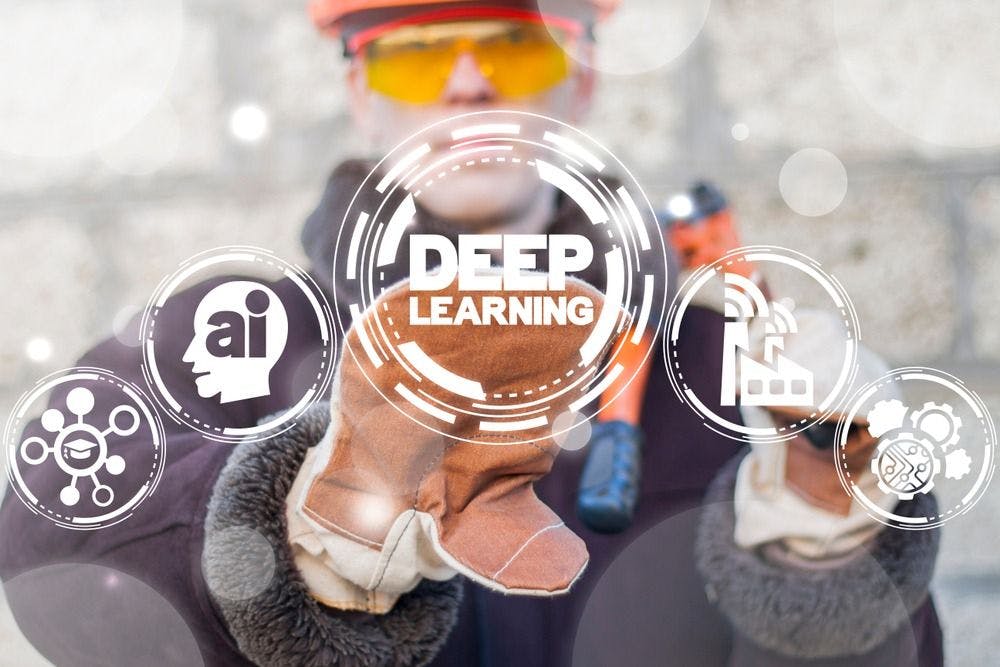Leverage Turing Intelligence capabilities to integrate AI into your operations, enhance automation, and optimize cloud migration for scalable impact.
Advance foundation model research and improve LLM reasoning, coding, and multimodal capabilities with Turing AGI Advancement.
Access a global network of elite AI professionals through Turing Jobs—vetted experts ready to accelerate your AI initiatives.
FOR DEVELOPERS
The Future of Deep Learning: Predictions and Opportunities

Artificial intelligence (AI) is no longer the stuff of science fiction. It’s taken over almost every segment of society. In fact, AI is evolving so constantly that there’s a big increase in new publications each year. A report by Our World in Data shows that there were 334,497 research papers published on AI in 2021 compared to 281,659 in 2019. A nearly 18% increase.
Terms like machine learning (ML) and deep learning (DL) are often used interchangeably with AI. However, they aren’t synonymous. In this article, we will cover DL, a subfield of AI. We will also discuss the future of deep learning and the opportunities.
Table of Contents
- 1. What is deep learning?
- 2. How is deep learning different from machine learning and artificial intelligence?
- 3. How popular is deep learning?
- 4. Applications and impact of deep learning
- 4.1. Computer vision
- 4.2. Speech recognition
- 4.3. Recommendation system
- 4.4. Fraud detection
- 5. Understanding the future of deep learning opportunities
- 5.1. Transfer learning
- 6. Conclusion
What is deep learning?
Deep learning is a branch of machine learning where artificial neural networks, modeled after the human brain, are trained using large amounts of data. The goal of deep learning is to enable computers to learn in a similar way to humans.
Humans perceive information from sources such as images, text, and speech through a combination of sensory organs and a network of neurons in the brain. This network exchanges electrical and chemical signals to transmit the information. Artificial neural networks operate in a similar manner, passing information through interconnected layers of nodes or neurons. In deep learning, the term "depth" refers to neural networks with more than three layers which can number over 100.
How is deep learning different from machine learning and artificial intelligence?
AI, machine learning and deep learning are frequently associated but have distinct differences. AI is designed so that it behaves more or less like a human being capable of solving problems like people. Meanwhile, ML is a subset of AI that uses statistical algorithms to train computer systems so they can make independent predictions and decisions based on historical data when exposed to new inputs. DL is a subset of machine learning and AI.
While ML and AI encompass a wide range of algorithms and techniques for training computer systems, deep learning is a specific approach to machine learning that is based on artificial neural networks. It is widely used for understanding texts and images for natural language processing (NLP) and computer vision-related tasks.

How popular is deep learning?
In this section, we will look at the popularity of deep learning among the public, research, and developer community.
The popularity of deep learning has boomed in the last five years. It’s used for many AI-related tasks like object recognition, text processing, image processing, etc. The figure below illustrates the trend of deep learning searched by people on Google.

The major reasons for its popularity are the highly accurate results produced by deep learning models, the ability to make predictions on unstructured datasets, and provide useful insights about the same. According to reports by AI Index, there’s been a significant increase (almost six times) in the number of citations among the research community.
Applications and impact of deep learning
Let’s look at a few important applications of deep learning models and their impact.
Computer vision
Computer vision is an area within machine learning that utilizes the capabilities of deep learning models extensively. For example, it is widely used for object identification like vehicle detection, facial recognition, and disease identification using medical images. It is also used in autonomous vehicles.
Speech recognition
This is one of the most common applications of deep learning. It uses long short-term memory (LSTM) and recurrent neural network (RNN) deep learning architecture for natural language processing tasks. Thanks to deep learning algorithms, it is possible to achieve good accuracy. There are many chatbots that have been developed to assist people in day-to-day tasks. For instance, Apple’s Siri and chatbots deployed at places like airports and railway stations.
Recommendation system
This uses deep learning architecture for recommending items based on users’ previous choices. Most e-commerce websites use recommendation systems for enhancing customer experience. For instance, displaying products based on customers’ previous purchases.
Fraud detection
Deep learning is commonly used for identifying fraudulent activities like fraudulent transactions, fake accounts on social media, etc. It also uses multi-layer neural network architectures to identify these activities.
There will be many more applications in the future of deep learning where it will be implemented in scenarios that require predictions with high accuracy and where large volumes of data have to be handled.
Understanding the future of deep learning opportunities
A McKinsey survey showed that while AI adoption has been adding value to organizations, the use of deep learning in business is still at an early stage. However, the advancements of this approach to AI are very promising. It is already transforming several industries, including healthcare, finance, and automotive.
Companies have massive amounts of data, known as big data, that need to be analyzed and understood. Deep learning is capable of handling it and analyzing it very accurately. Classic machine learning algorithms like Naïve Bayes, decision trees, and support vector machines can’t directly be applied to raw data. Typically, a preprocessing step called feature extraction is necessary to convert the data into a format that algorithms can understand so as to classify it. The process is complex and time-consuming.
In contrast, deep learning eliminates the need for manual feature extraction, with neural networks capable of drawing features out of raw data automatically. Multiple processing layers produce increasingly complex representations of data, culminating in the best possible input data.
Transfer learning
Deep learning enables transfer learning, a technique where a pre-trained neural network can be reused for a new but related problem. The input and middle layers of the pre-trained model, which detect generic features, are transferred to another network. Only the later layers need to be retrained to recognize more specific features. This approach is ideal when sufficient data is challenging to obtain or when faster training is required. Several public and third-party models and toolkits are available for fine-tuning for different use cases.
These advantages of deep learning techniques make them useful and increase the scope of being used for implementing new models for new use cases. In the future of deep learning, there will be more advancements in terms of algorithms. For instance, FAIR has developed state-of-the-art deep learning models like Detectron2 for object detection problems which outperform many other previously released algorithms like VGG16 and ResNet models.
Conclusion
Deep learning continues to gain popularity owing to its highly accurate results, ability to make predictions on unstructured datasets, and provide useful insights about the datasets. While often confused with machine learning and artificial intelligence, it is specifically based on artificial neural networks. And although its use in business is still at a nascent stage, it holds much promise as it is already transforming several industries. It’s likely that deep learning will continue to evolve and have a significant impact on our society in the future.
Author

Turing
Author is a seasoned writer with a reputation for crafting highly engaging, well-researched, and useful content that is widely read by many of today's skilled programmers and developers.
Frequently Asked Questions

Press

Blog
